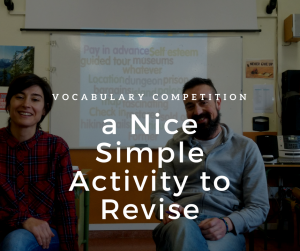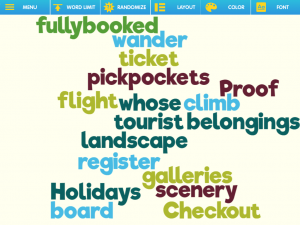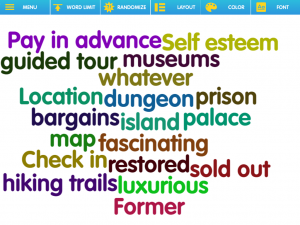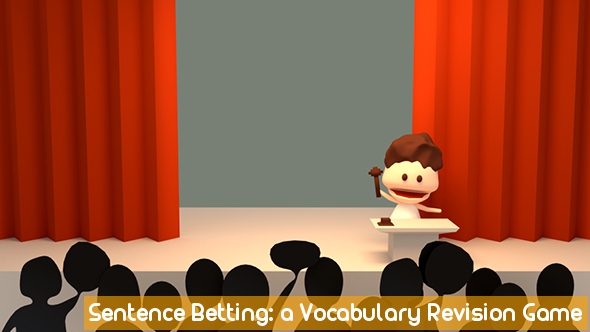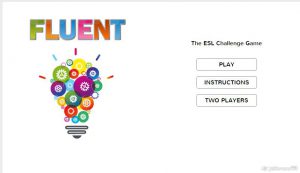A nice simple idea to start a lesson.
I always like to start my lessons doing some quick revision of what I taught the previous day. I do it using different techniques, but they always have something in common: they help get students into the mood and start using English from minute one.
The idea in this activity is to combine two things:
- Revision of targeted vocabulary
- Consolidation of relative sentences
PROCEDURE
- Divide the class into two teams and ask them to choose a person to play for them and take the “hot seats”. These two students will be facing their teams and with their backs to the whiteboard.(see picture above)
- Decide which team starts the game by tossing a coin. Let’s say Team A starts the game.
- Display the first word cloud on the board.
- Team A will choose a word or expression from the word cloud and define it for its player. Once the player has guessed the word, the teacher will cross it off and the team will define another one. For every word they guess, they will get 1 point. If the player for Team A doesn’t know the word, then Team B gets the chance to define the word for its player. If he guesses, the team gets 2 points for this word and this same team continues defining words and scoring points.
- Continue until all the words have been defined.
- Procedure is repeated again with word cloud 2. The teams choose other players to take the “hot seats”. Team B starts playing now.
As stated above, the idea is to revise relative sentences, but obviously in the heat of the game I’d allow any paraphrasing students can come up with.
Online Word Cloud used: ABCya. A word of warning: this tool is so easy to use that you’ll soon get addicted to it! See tutorial below.
Word Cloud 1
Word Cloud 2
